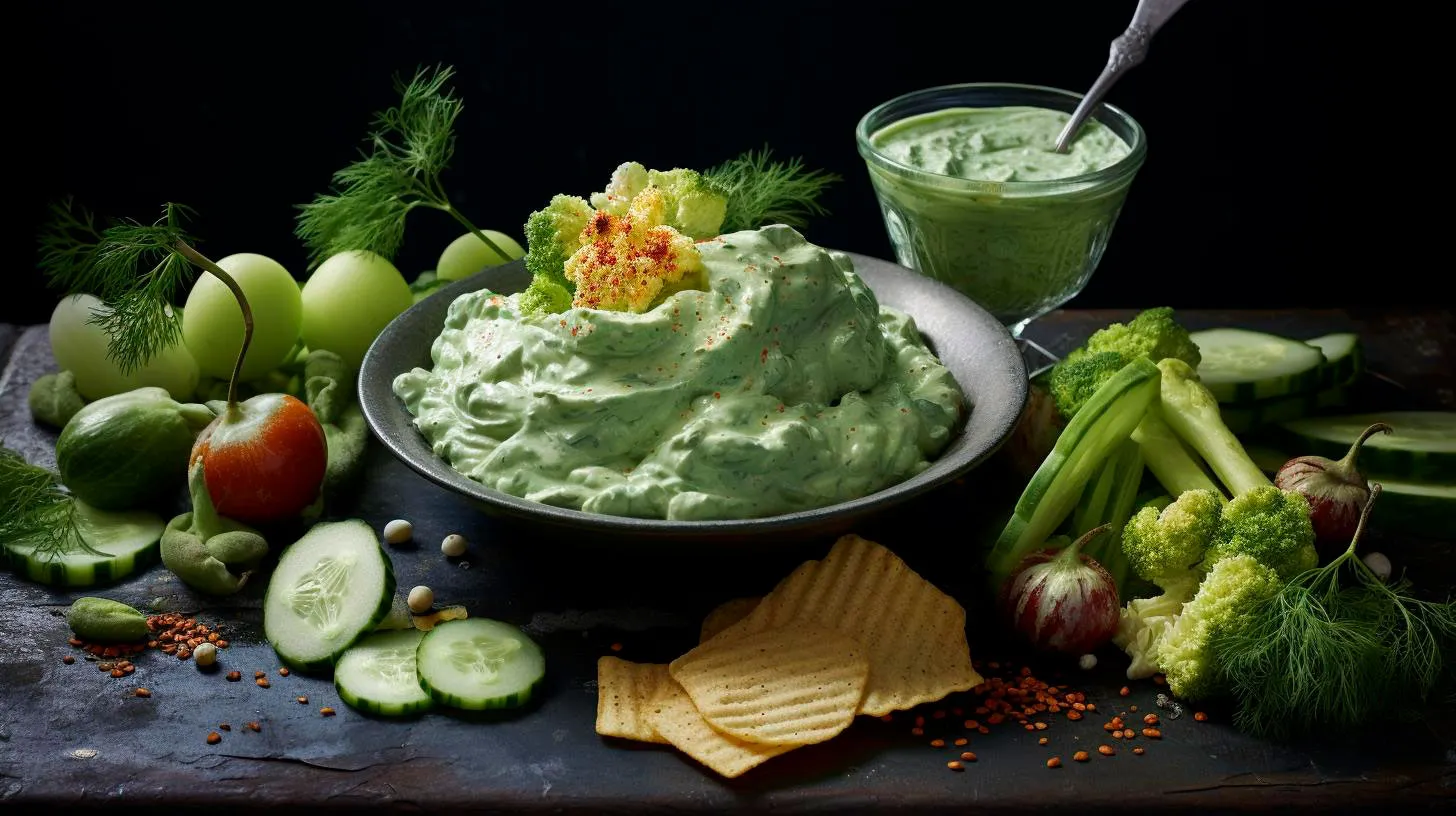Innovations for Sustainable Sushi
In order to ensure the long-term sustainability of this beloved cuisine, various innovations have emerged within the industry. In this article, we will explore these innovations and their potential to transform the future of sushi.
The Growing Need for Sustainability
According to the Food and Agriculture Organization of the United Nations, over 90% of the world’s fish stocks are either fully exploited or overfished. This alarming statistic highlights the urgent need for sustainable practices in the seafood industry, including sushi production. To address this issue, several key innovations have been introduced to promote sustainable sushi consumption:
- Farmed Seafood: Aquaculture, or fish farming, has gained momentum as a sustainable alternative to wild-caught seafood. It reduces pressure on wild fish populations and allows for better control over environmental impacts. Many sushi restaurants are now sourcing their fish from responsibly managed aquaculture facilities.
- Alternative Fish Species: Traditional sushi often includes popular fish species like tuna and salmon, which are often overfished. To counteract this, chefs are exploring alternative fish species that are not only delicious but also abundant. These include Arapaima, Arctic Char, and Kampachi, which provides a wider range of sustainable options for sushi lovers.
- Traceability and Certification: By implementing traceability systems and obtaining certifications such as Marine Stewardship Council (MSC) or Aquaculture Stewardship Council (ASC), sushi restaurants and suppliers can ensure that their seafood is sourced sustainably. This transparency helps consumers make informed choices and supports sustainable fishing practices.
Innovations in Packaging
The sushi industry has also recognized the importance of sustainable packaging solutions to minimize its environmental footprint. The excessive use of single-use plastics and non-recyclable materials associated with sushi packaging has prompted the adoption of innovative alternatives:
- Biodegradable Packaging: Manufacturers are now producing sushi containers and packaging materials using biodegradable and compostable materials. These innovative alternatives reduce waste generation and provide a more sustainable option for takeaway sushi lovers.
- Reusable Containers: Some sushi restaurants have introduced innovative concepts like reusable containers. Customers return the containers after consuming their sushi, and they are then sanitized and reused, reducing the reliance on single-use packaging materials.
- Minimalist Design: Simple and minimalist packaging designs not only portray an elegant and sophisticated image but also promote environmental responsibility. By using fewer materials and opting for lightweight designs, the overall environmental impact of sushi packaging can be significantly reduced.
Technological Advancements
Furthermore, various technological advancements have revolutionized sustainable sushi production, offering new methods that enhance efficiency and reduce waste:
- Smart Fishing Gear: Traditional fishing practices often result in significant bycatch and unintentional harm to marine life. However, the development of smart fishing gear, such as underwater cameras and sensors, helps fishermen target specific species, reducing bycatch and promoting more sustainable fishing practices.
- Efficient Food Preparation: Automation and robotics have found their way into sushi kitchens, streamlining the preparation process and reducing food waste. Sushi-making robots can precisely portion ingredients, ensuring minimal wastage and consistent quality, while automated sushi rolling machines enhance efficiency and reduce human error.
- Waste Reduction Systems: To prevent excessive food waste, innovative systems have been introduced that enable sushi restaurants to track and manage their ingredient inventory effectively. Smart ordering systems help optimize ingredient usage, reducing waste and minimizing environmental impact.
Key Takeaways
Sustainable sushi innovations are paving the way for a more environmentally conscious future. Key takeaways from this article include:
- Increasing demand for sushi highlights the need for sustainable practices in the seafood industry.
- Aquaculture and alternative fish species provide sustainable alternatives to overfished seafood.
- Traceability systems and certifications ensure transparency and support responsible sourcing.
- Biodegradable packaging and reusable containers reduce waste generation.
- Minimalist packaging designs promote environmental responsibility.
- Smart fishing gear and technological advancements enhance sustainability in fishing and sushi production.
- Efficient food preparation and waste reduction systems minimize food waste.
By embracing these innovations, sushi lovers can indulge in their favorite cuisine while contributing to the preservation of marine ecosystems. The sustainable sourcing of seafood and eco-friendly packaging options are vital steps toward a future where sushi can continue to be enjoyed without causing harm to our oceans.
Blending Tradition and Eco-consciousness
One area where this shift towards sustainability is particularly evident is in the blending of tradition and eco-consciousness. By combining timeless practices and innovative environmental solutions, we can create products that pay homage to our heritage while also caring for the planet.
The Power of Tradition
Tradition is deeply rooted in our cultures and has been passed down through generations. It is a testament to the wisdom and craftsmanship of our ancestors. Incorporating traditional techniques into modern products not only preserves our heritage but also adds a unique touch to contemporary designs. By embracing tradition, we can create items that tell a story, evoke nostalgia and resonate with consumers on a deeper level.
Key Takeaway: Blending tradition with modernity allows us to create products that combine timeless appeal with innovative functionality.
The Rise of Eco-consciousness
With climate change and environmental degradation becoming pressing concerns, individuals and businesses alike are seeking sustainable alternatives. Eco-consciousness is no longer a niche trend but a global movement towards a greener future. Consumers are actively seeking out products that are eco-friendly and have a limited impact on the environment. This demand for sustainability has led to the development of innovative materials, manufacturing processes, and design approaches.
Key Takeaway: Embracing eco-consciousness is essential for businesses to cater to the growing demand for sustainable products and minimize their environmental footprint.
Blending Tradition and Eco-consciousness
Combining tradition and eco-consciousness creates a synergy that leverages the best of both worlds. By incorporating sustainable practices into traditional craftsmanship, we can create products that are not only aesthetically pleasing but also eco-friendly. Here are some ways in which tradition and eco-consciousness can merge:
- Natural and Organic Materials: Utilizing natural materials such as organic cotton, bamboo, or cork not only adds a touch of tradition to products but also reduces reliance on synthetic and non-renewable resources.
- Artisanal Techniques: Collaborating with skilled artisans who employ traditional techniques helps preserve cultural heritage while ensuring sustainable production processes.
- Recycling and Upcycling: Repurposing old or discarded materials into new products is a creative way to reduce waste and give a second life to items that would have otherwise ended up in landfills.
- Local Sourcing: Supporting local communities by sourcing materials locally reduces transportation-related emissions and fosters sustainable economic growth.
Key Takeaway: Blending tradition with eco-consciousness enables the creation of products that are not only environmentally friendly but also celebrate craftsmanship and cultural heritage.
The Benefits of Blending Tradition and Eco-consciousness
Blending tradition and eco-consciousness offers several advantages that can appeal to both businesses and consumers:
- Unique Selling Point: Products created by blending tradition and eco-consciousness can stand out in the market, attracting consumers who value sustainability and cultural significance.
- Storytelling and Branding: The combination of tradition and eco-consciousness provides a narrative that resonates with consumers, allowing brands to differentiate themselves and build stronger connections.
- Positive Environmental Impact: By embracing sustainable practices and materials, businesses can reduce their carbon footprint and contribute to a healthier planet.
- Economic Empowerment: Collaborating with local artisans and communities supports traditional livelihoods, preserving cultural diversity and empowering local economies.
Key Takeaway: Blending tradition and eco-consciousness can create unique products with compelling stories, positive environmental impact, and economic empowerment.
The Future of Tradition and Eco-consciousness
As the world continues to prioritize sustainability, the blending of tradition and eco-consciousness is likely to become even more prevalent. Innovations in sustainable materials, manufacturing techniques, and consumer demand will drive the development of new products that seamlessly integrate tradition with environmental responsibility.
By embracing this fusion, we have the opportunity to bridge the gap between the past and the future, cherishing our cultural heritage while forging a path towards a greener and more sustainable world.
Key Takeaway: The future holds immense potential for products that blend tradition and eco-consciousness, offering sustainable solutions without compromising on aesthetics or functionality.
Honoring Ancient Sushi Artistry
The Origins of Sushi
Sushi dates back to the 8th century in Japan, where it emerged as a way to preserve fish by fermenting it with rice. The fermented rice acted as a natural preservative, allowing fish to be stored for several months. Over time, this preservation method evolved, and Japanese chefs began to experiment with various ingredients and techniques to enhance the taste and freshness of sushi.
Today, sushi has become a renowned culinary art form, with skilled chefs honing their craft to create edible masterpieces. With each bite, one can experience not only a harmonious combination of flavors but also the dedication and precision that goes into preparing each piece of sushi.
The Art of Sushi Making
The artistry behind sushi making lies not only in the ingredients but also in the meticulous techniques used by sushi chefs. Here are some key elements of traditional sushi-making:
- Neta: The seafood or other toppings used in sushi are known as neta. Freshness and quality play a crucial role in creating outstanding sushi. Chefs carefully select the finest fish, ensuring that it is at its peak of flavor.
- Shari: The rice used in sushi, known as shari, is another essential component. Chefs meticulously cook and season the rice with vinegar, sugar, and salt, achieving the perfect balance of flavors and textures.
- Nigiri: Nigiri sushi consists of a small hand-pressed mound of sushi rice topped with a slice of neta. The chef skillfully forms each nigiri by hand, ensuring that the rice and topping are perfectly balanced.
- Maki: Maki sushi, also known as rolled sushi, involves wrapping the neta and rice with a sheet of seaweed (nori). The chef delicately rolls and slices the maki into bite-sized pieces.
By mastering these techniques, sushi chefs are able to create visually stunning and flavorful dishes that showcase their expertise and passion for the art of sushi making.
The Significance of Preserving Tradition
As sushi becomes increasingly popular worldwide, it is essential to preserve the tradition and artistry that have made it a culinary treasure. Honoring ancient sushi artistry ensures that the essence and authenticity of this beloved dish are maintained.
Preserving the art of sushi making revolves around several key factors:
- Ingredient Sourcing: Sourcing high-quality and sustainable ingredients is crucial for maintaining the integrity of sushi. Responsible sourcing practices help protect the environment and ensure the availability of top-notch ingredients for future generations.
- Technique Mastery: Sushi chefs spend years perfecting their skills and techniques. It is important to support their dedication by recognizing and promoting traditional sushi-making methods.
- Cultural Awareness: Learning about the Japanese culture and traditions surrounding sushi deepens our connection with this culinary art form. Understanding the historical significance and rituals associated with sushi enhances the overall dining experience.
Honoring ancient sushi artistry not only safeguards tradition but also fosters creativity and innovation within the culinary world. By blending traditional techniques with modern approaches, chefs can push the boundaries while still paying homage to the roots of sushi.
Key Takeaways
- Traditional sushi-making is an art form that originated in Japan in the 8th century.
- Sushi chefs meticulously select high-quality ingredients to create visually stunning and flavorful dishes.
- Preserving tradition involves responsibly sourcing ingredients, recognizing mastery of techniques, and understanding the cultural significance of sushi.
- Honoring ancient sushi artistry allows for innovation while maintaining the authenticity of this beloved dish.
So, the next time you indulge in a piece of sushi, take a moment to appreciate the ancient artistry behind it. Allow the flavors and textures to transport you to the bustling streets of Tokyo, where masterful chefs continue to craft edible works of art.
The Future of Earth-friendly Sushi Making
Thankfully, the future of sushi-making is taking a more earth-friendly approach, incorporating sustainable practices, innovative technology, and alternative ingredients.
Sustainable Sourcing
One of the key aspects of creating earth-friendly sushi is sourcing sustainable seafood. Overfishing has become a serious concern globally, with multiple species at risk of extinction. Sustainable seafood sourcing ensures that the ingredients used in sushi are harvested responsibly, without depleting fish populations or damaging marine ecosystems.
- Restaurants and sushi chefs are increasingly partnering with sustainable seafood organizations to ensure they are using responsibly sourced fish.
- Consumers can also look for eco-certifications such as the Marine Stewardship Council (MSC) or the Aquaculture Stewardship Council (ASC) when choosing sushi establishments.
- By supporting sustainable seafood, we can help protect our oceans and enjoy sushi guilt-free.
Innovative Technology
The future of sushi-making is intertwined with advancements in technology. Restaurants are adopting innovative tools and techniques to reduce waste, improve efficiency, and enhance the overall dining experience.
- Automated sushi robots are being used in some restaurants to increase productivity and reduce the need for human labor.
- These robots can precisely measure ingredients, roll sushi, and even slice it, ensuring consistency and minimizing food waste.
- Additionally, smart inventory management systems help chefs track their ingredients, reducing food waste and optimizing the ordering process.
Alternative Ingredients
Earth-friendly sushi making is also embracing the use of alternative ingredients that reduce reliance on traditional fish sources.
- Plant-based sushi, utilizing ingredients like tofu, tempeh, or mushrooms, provides a sustainable alternative for vegetarians and vegans.
- Mock fish made from plant-based proteins, such as soy or pea protein, are gaining popularity, mimicking the texture and flavors of traditional seafood.
- By exploring these alternatives, sushi lovers can enjoy their favorite dishes without compromising the environment.
The Importance of Earth-friendly Sushi Making
Adopting earth-friendly sushi-making practices is crucial for a sustainable future. Here are some key takeaways:
- Protecting marine ecosystems: Sustainable sourcing of seafood helps preserve the delicate balance of marine ecosystems, preventing overfishing and habitat destruction.
- Reducing plastic waste: Many traditional sushi establishments rely heavily on plastic packaging. Embracing more eco-friendly packaging options can significantly reduce plastic waste.
- Supporting sustainable initiatives: By choosing sushi establishments that prioritize sustainability, we encourage the entire industry to adopt earth-friendly practices.
- Exploring innovative solutions: Embracing technology and alternative ingredients can lead to exciting culinary innovations while minimizing environmental impact.
In conclusion, the future of sushi-making promises a more earth-friendly approach. By sourcing sustainable seafood, leveraging innovative technology, and exploring alternative ingredients, sushi establishments are paving the way for a more sustainable sushi industry that satisfies our cravings while protecting the planet.
Sources:
– Sustainable Fisheries Partnership – https://sustainablefish.org/
– Marine Stewardship Council – https://www.msc.org/
– Aquaculture Stewardship Council – https://www.asc-aqua.org/



